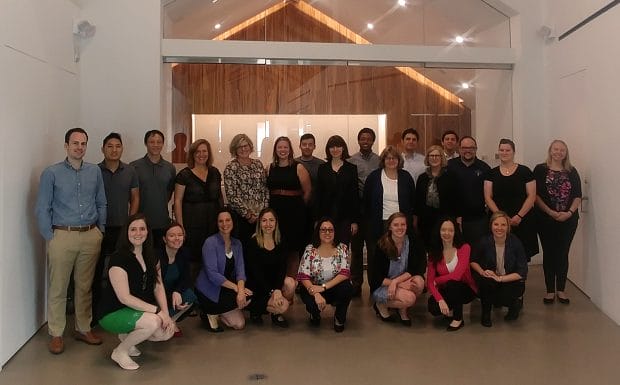Over the last year and a half, we collaborated with 11 financial capability organizations to teach them how to apply behavioral insights to their programs. Each organization identified and tackled an initial problem impeding client financial health by leveraging their unique knowledge of the populations they serve. The reach of the Behavioral Design Project (BDP) for Promoting Financial Health extends beyond solving one problem with behavioral science—instead, our goal was to equip financial capability organizations with the skills they need to continuously apply behavioral insights to their programs and products to maximize impact on clients’ lives. Any organization with a social mission can leverage the insights produced by the participants, whose experiences and takeaways will be documented in a series of case studies.
Last week, we gathered the participating organizations for the closing event of this comprehensive program. Teams shared reflections of their experiences, detailing the initial problem they aimed to address, behavioral barriers, and their design solutions—as well as the challenges they encountered along the way. Additionally, a panel of champions of the behavioral approach, Dr. Elke Weber of Princeton University, Dawn Miller of the NYC Limousine and Taxi Commission, and Erik Johnson of Morningstar, discussed lessons and strategies for using behavioral design at organizations.
Some key points they shared? Think of behavioral design as “making things easier for people,” said Dawn. That’s what it boils down to, and it can feel like a less-daunting task (and even a no-brainer) when framed that way.
Elke added: “Help people achieve something they already want to achieve.” Insights from behavioral science are especially powerful for closing the gap between what people intend to do, such as sign up to be organ donors, and what they actually do (forget to check the box to sign up).
A common mistake organizations make when trying to use behavioral design, Erik stressed, is “focusing too much on the solution at the expense of focusing on the right problem.” Instead of starting with an idea to implement, identify which problems exist before delving into innovative ways to address them.
The three panelists also shared findings from their own work using behavioral science for social good—including helping people applying for a taxi license complete their applications, increasing sustainable practices with defaults, and supporting clients’ financial goals. Our team led discussions on next steps for using behavioral design in organizations, such as how to audit communications and processes and tips for applying the behavioral design methodology to any project.
With the knowledge and methods they need to continue solving problems with behavioral design long after our engagement together ends, these financial innovators are equipped with one more tool for promoting financial health among their clients. Interested innovators can check out our first case study from the program to learn about applying behavioral insights to their own work.
The case study illustrates how the Seattle Housing Authority used behavioral science to reduce fines incurred when their clients move out of an apartment. We’ll be publishing more in-depth analyses of participants from the BDP, so stay tuned and check out this page for more.



